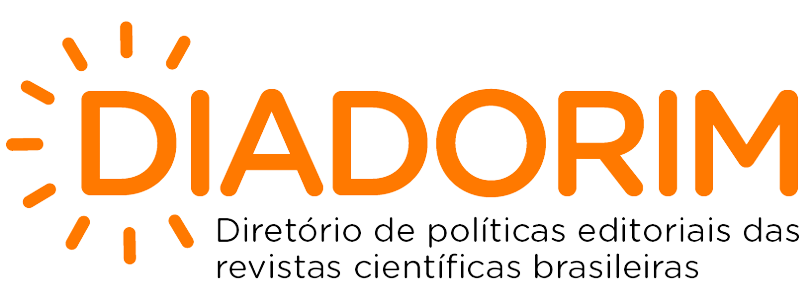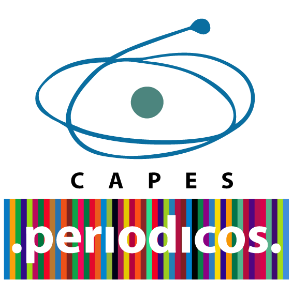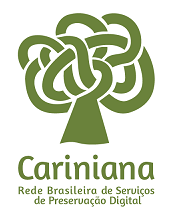Landforms Compartmentalization in Uruguay with Use of Geomorphons Obtained in Automated Classification
DOI:
https://doi.org/10.5433/2447-1747.2023v32n1p9Abstract
This research aimed to carry out a classification and zoning of Uruguay relief considering the association and dominance of certain relief elements, defined as geomorphons, that can be represented by 10 most common elements: flat, peak, ridge, shoulder, spur, slope, hollow, footslope, valley, and pit. For the processing on DEM and generation of geomorphons, it was used an online application. This requires a set of raster data and two scalar values such as free parameters. The input file for scanning is an MDE and two free parameters are lookup L (distance in meters or cell units) and threshold t (leveling in degrees). To the free parameters was applied L value of 20 pixels (1,800 meters) and t equal to 2 degrees. The predominance relationship and the location between the geomorphons elements allowed to divide Uruguay into eleven relief compartments, regionally called Lagoa Mirim; Rio Negro, Santa Lucia; Cucchilla Dayman; Durazno; Tacuarembó; Great Inferior Cucchilla; Haedo's Cucchilla; Large Cucchila; Isla Cristalina de Rivera and; Cerro Catedral. Uruguay is characterized by a relief with large flat areas. The relevant characteristics identified are consistent with the cartographic history performed in Uruguay and was very efficient in the delimitation of different landforms with distinct and peculiar features.
Downloads
References
ARCGIS ONLINE. Bem-Vindo ao ArcGIS Online. [2022]. Disponível em: http://www.arcgis.com/home/index.html. Acesso em: 18 jul. 2022. DOI: https://doi.org/10.22224/gistbok/2022.2.13
ATKINSON, Jonathan; CLERCQ, Willem de; ROZANOV, Andrei. Multi-resolution soil-landscape characterisation in KwaZulu Natal: Using geomorphons to classify local soilscapes for improved digital geomorphological modelling. Geoderma Regional, [s.l.], v. 22, p. 1-17, 2020. DOI: https://doi.org/10.1016/j.geodrs.2020.e00291
HUGGETT, Richard John. Soil landscape systems: A model of soil genesis. Geoderma, Amsterdan, v. 13, n. 1, p. 1-22, 1975. DOI: https://doi.org/10.1016/0016-7061(75)90035-X
IWAHASHI, Junko; PIKE, Richard. J. Automated classifications of topography from DEMs by an unsupervised nested-means algorithm and a three-part geometric signature. Geomorphology, Amsterdam, v. 86, n. 3-4, p. 409-440, 2007. DOI: https://doi.org/10.1016/j.geomorph.2006.09.012
JASIEWICZ, Jaroslaw; STEPINSKI, Tomasz F. Example-Based Retrieval of Alike Land-Cover Scenes from NLCD2006 Database. IEEE Geoscience and Remote Sensing Letters, New York, v. 10, n. 1, p. 155-159, 2013a. DOI: https://doi.org/10.1109/LGRS.2012.2196019
JASIEWICZ, Jaroslaw; STEPINSKI, Tomasz. F. Geomorphons a pattern recognition approach to classification and mapping of landforms. Geomorphologym, Amsterdam, v. 182, p. 147-156, 2013b. DOI: https://doi.org/10.1016/j.geomorph.2012.11.005
JULESZ, Bela. A brief outline of the texton theory of human vision. Trends in Neuroscience, Amsterdam, v. 7, p. 41-45, 1984. DOI: https://doi.org/10.1016/S0166-2236(84)80275-1
JULESZ, Bela. Textons, the elements of texture perception, and their interactions. Nature, [s. l.], v. 290, p. 91-97, 1981. DOI: https://doi.org/10.1038/290091a0
LIAO, Wen-Hung. Region Description Using Extended Local Ternary Patterns. In: INTERNATIONAL CONFERENCE ON PATTERN RECOGNITION, 20., 2010, Washington. Proceedings […]. Washington: IEEE, 2010. p. 1003-1006. DOI: https://doi.org/10.1109/ICPR.2010.251
LOLLO, José Augusto de. O uso da técnica de avaliação do terreno no processo de avaliação do mapeamento geotécnico: Sistematização e aplicação na quadrícula de Campinas/SP. 1996. Tese (Doutorado em Engenharia Geotecnia) – Universidade de São Paulo, São Carlos, 1996. Disponível em: https://pt.slideshare.net/jlollo/tese-de-doutorado. Acesso em: 18 jul. 2022.
MACMILLAN, Robert A.; SHARY, P. A. Chapter 9 Landforms and landform elements in geomorphometry. In: HENGL, Tomislav; REUTER, Hannes. I. (ed.). Geomorphometry: Concepts, Software, Applications. Amsterdam: Elsevier, 2009. p. 227-254. (Developments in Soil Science, v. 33). DOI: https://doi.org/10.1016/S0166-2481(08)00009-3
MUÑOZ, Viviana Aguilar. Análise geomorfométrica de dados SRTM aplicada ao estudo das relações solo-relevo. 2009. Dissertação (Mestrado em Sensoriamento Remoto) – Instituto Nacional de Pesquisas Espaciais, São José dos Campos, 2009.
PANARIO, Daniel. Geomorfología del Uruguay, Propuesta de un marco estructural y un esquema de evolución del modelado del relieve uruguayo. Montevideo: Facultad de Humanidades y Ciencias UdelaR, 1988.
PETSCH, Carina; ROBAINA, Luís Eduardo de Souza; TRENTIN, Romario; ROSA, Kátia Kellem da; FIGUEIREDO, Anderson Ribeiro de; SIMÕES, Jefferson Cardia. O uso de métodos de mapeamento automático de relevo para análise de formas glaciais. Revista Brasileira De Geomorfologia, Curitiba, v. 21, n. 2, p. 253-269, 2020. Disponível em: https://rbgeomorfologia.org.br/rbg/article/view/1771/386386486. Acesso em: 18 jul. 2022. DOI: https://doi.org/10.20502/rbg.v21i2.1771
PORTA, Fernando Preciozzi; PIOPPO, Jorge Spoturno; MARZIOTTO, Walter Heinzen; KEMPA, Pier Rossi. Memoria explicativa de la carta geológica del Uruguay a la escala 1:500.000. Montevideo: Ministerio de Industria y Energía; DINAMIGE. 1985.
ROBAINA, Luís Eduardo de Souza; TRENTIN, Romario; LAURENT, François. Compartimentação do estado do Rio Grande do Sul, Brasil, através do uso de geomorphons obtidos em classificação topográfica automatizada. Revista Brasileira de Geomorfologia, Curitiba, v. 17, n. 2, p. 287-298, 2016. Disponível em: https://rbgeomorfologia.org.br/rbg/article/view/857/534. Acesso em: 18 jul. 2022. DOI: https://doi.org/10.20502/rbg.v17i2.857
SILVEIRA, Claudinei Taborda; SILVEIRA, Ricardo Michel Pinheiro; TRENTIN, Romario; ROBAINA, Luís Eduardo de Souza. Classificação automatizada de elementos de relevo no estado do Paraná (Brasil) por meio da aplicação da proposta dos geomorphons. Revista Brasileira de Geomorfologia, Curitiba, v. 19, n. 1, p. 33-57, 2018. Disponível em: https://rbgeomorfologia.org.br/rbg/article/view/1263/641. Acesso em: 18 jul. 2022. DOI: https://doi.org/10.20502/rbg.v19i1.1263
TROEH, Frederick. R. Landform equations fitted to contour maps. American Journal Science, [s. l.], v. 263, n. 7, p. 616-627, 1965. Disponível em: https://doi.org/10.2475/ajs.263.7.616. Acesso em: 13 mar. 2016. DOI: https://doi.org/10.2475/ajs.263.7.616
UNIVERSITY OF CINCINNATI. Space informatics lab. Cincinnati: University of Cincinnati, 2020. Disponível em: http://sil.uc.edu/. Acesso em: 18 jul. 2022.
Downloads
Published
How to Cite
Issue
Section
License
Copyright (c) 2023 GEOGRAFIA (Londrina)

This work is licensed under a Creative Commons Attribution-NonCommercial 4.0 International License.
The authors retain the copyright simultaneously licensing the work under the Creative Commons Attribution-NonCommercial 4.0 International license. This license allows third parties to distribute, remix, adapt, and develop the material in any medium or format for non-commercial purposes, giving due credit for authorship and initial publication in this journal.
The journal reserves the right to make normative, orthographic, and grammatical changes to the originals in order to maintain the standardized language and the credibility of the vehicle while still respecting the authors' writing style. Conceptual suggestions, changes, or corrections will be communicated to the authors when necessary.
The opinions expressed by the authors of the articles are their sole responsibility.
This work is licensed under a Creative Commons Attribution-NonCommercial 4.0 International license.















